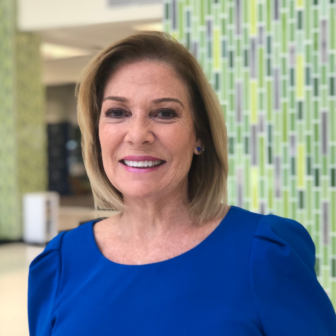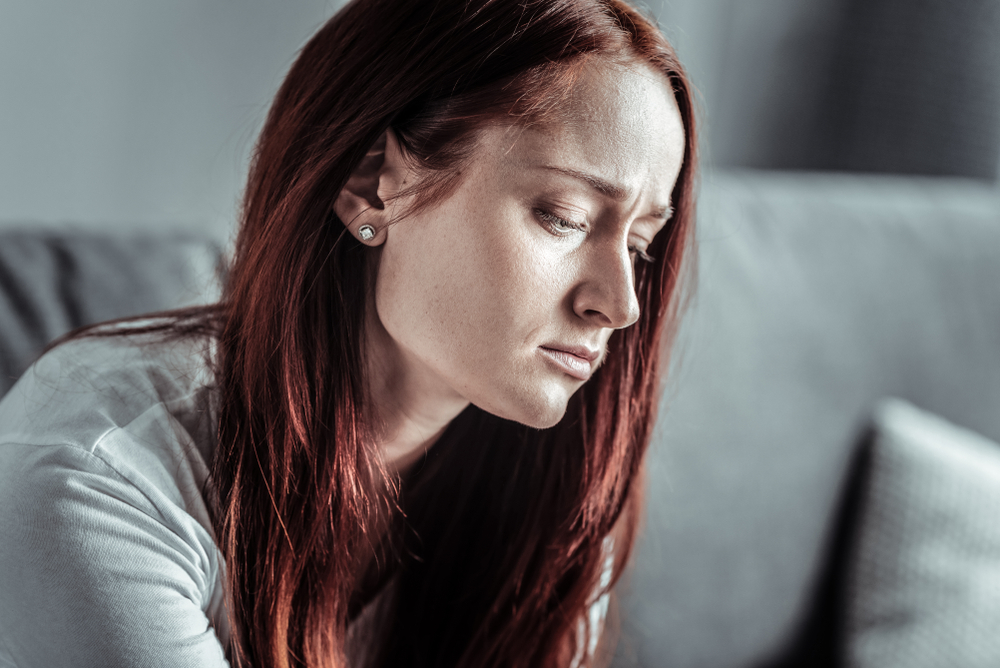![]() For the past 30 years, I have worked with girls and young women throughout the state of Florida, and for six years I have led the Delores Barr Weaver Policy Center, which is a recognized leader in the advancement of the rights of girls, young women and youth who identify as female, especially those impacted by the justice system.
For the past 30 years, I have worked with girls and young women throughout the state of Florida, and for six years I have led the Delores Barr Weaver Policy Center, which is a recognized leader in the advancement of the rights of girls, young women and youth who identify as female, especially those impacted by the justice system.
The Policy Center has led the nationally recognized Justice for Girls Movement in Florida for over a decade with our mission partner, The Children’s Campaign. In the First Coast (Duval, Clay, Nassau, Baker and St Johns counties) we have focused on reducing the highest incarceration rate of girls in the state and challenging professionals to see the girls in their decision-making. We have set three bold goals for the Justice for Girls movement:
- End the disparate treatment of girls and young women in Florida’s juvenile justice system
- Change the policies and practices that trap young women into lifelong poverty
- Develop a Florida-based research capacity to introduce and spotlight issues, monitor progress and support improved policies and practices.
In Florida, there were more than 9,000 girls arrested and more than 340 girls in lock-up facilities across the state last year. The latest available statewide assessment data of incarcerated girls from the Florida Department of Juvenile Justice revealed that:
- 82% had witnessed violence;
- 57% suffered from a diagnosed mental health problem;
- 40% experienced trauma;
- 84% had interactions with drugs, and
- 38% experienced sexual abuse, exploitation, rape and/or molestations in their young lives.
 Black girls continue to be over-represented at all points along the justice continuum statewide. Although black girls account for 21% of the general population of girls aged 10-17 in Florida, they represent 44% of total girls arrested, 54% of girls on probation, 53% of girls committed and 54% of girls moved to adult court.
Black girls continue to be over-represented at all points along the justice continuum statewide. Although black girls account for 21% of the general population of girls aged 10-17 in Florida, they represent 44% of total girls arrested, 54% of girls on probation, 53% of girls committed and 54% of girls moved to adult court.
And it doesn’t stop there. When girls are arrested from lock-up or complete their probation sanctions, they very often find themselves trapped in a cycle of poverty because restrictive policies and practices inhibit their ability to advance education, get a job or secure safe and affordable housing.
See the reason for the behavior
Detention costs about $329 per day per girl, and a nine-month stay in residential commitment cost approximately $77,000. Incarceration pulls girls deeper into the system, aggravates mental illness, increases risk of self-harm and abuse by peers and staff, interrupts education and impacts long-term employment opportunities, all of which have detrimental impacts for girls, communities and society.
What I have learned in my decades of working with girls is this: Trauma and need drive behaviors. And the more intense the behaviors, the greater the needs.
Too often the adults who have the power to change the trajectory of a girl’s life simply do not see her. They do not see her pain or her suffering. They only see her behavior. And it is through this lens that she is labeled and treated: She is manipulative, she’s just looking for attention; she’s so mean; she is angry, withdrawn, sullen, disrespectful; she is promiscuous; she is a delinquent.
Routinely the response is that this girl needs to be removed, separated, expelled, detained, restrained, locked up, incarcerated, punished. The system’s response is regularly limited to controlling behaviors rather than taking the time to see the girl’s need and understand the context of her lived experiences.
With the recent release of three major research reports on the status of girls in Florida, we renew our call to action to address the issues facing girls in or at risk of entering the justice system.
The research reveals how many young, vulnerable girls in our state have lives that, more and more, are singularly defined by bullying, physical and sexual abuse, trauma and a real sense of hopelessness:
One in three girls does not feel safe in school; two in three girls report instances of verbal bullying; one in three report physical bullying, and a similar number have experienced cyberbullying.
One in 10 girls report instances of forced sexual intercourse. In 2018, 2,457 births to mothers under the age of 18 were documented. In that same year, 7,581 girls were removed from their homes because of physical or sexual abuse, domestic violence or parental drug abuse. Sex trafficking of children in our state is prevalent, and research shows that the average age of girls to be bought and sold for sex is 13.
Behind these numbers are girls and young women who, in every corner of our state, are suffering.
One in three girls experience depression. More than half report feeling sad or depressed on most days of the year. One in three expresses feeling that life is not worth living. More than half report substance use. And most alarmingly, one in five girls reports serious suicide ideation.
Years ago, I met a young girl in a juvenile lock-up facility in Florida. Her narrative could easily be the story of a thousand girls in our state. Sexual abuse started at the age of 4, suspensions from school began at age 7. At 14, she was locked up in a juvenile justice facility. She shared that no one ever asked what happened to her. I asked her what she wanted adults to know who have the power to change how girls like her are treated. She said, “Tell them to see me for who I am, not for who they think I am. See me for who I can become.”
The system’s response to girls, like the girl whose story is above, is typically to lock them in facilities behind fences and razor wire. More and more, the will to align the placements of these children with their needs — their story — is subjugated to the needs and conveniences of the adults who are in charge of managing their experiences and outcomes. And this comes with significant immediate and long-term costs to the taxpayers who will pay for it.
The truth is that children act out of their pain and trauma. Their behaviors are a cry for help. The “easy” solution of lockup adds to their trauma and promotes a spiral into even more desperate behaviors, social costs and dire, even deadly, outcomes.
Decades of work, research, hands-on experience and listening to children has taught me that we make a real difference in the trajectory of a child’s life — in her outcomes and aspirations — when we build on our research. This research emboldens best practices and helps create policies and programs that align with the real needs of girls. It inspires us to see her — uniquely and dynamically — and to help her. To do so not only transforms the girl, but also her family and her community.
To do anything less is to risk further trauma and victimization to the children with the highest need.
Lawanda Ravoira is a national expert, advocate, published author, researcher and trainer on issues specific to girls and young women who are impacted by the justice system. She is the founding president and CEO of the Delores Barr Weaver Policy Center, where she leads the Florida Justice for Girls Initiative.
